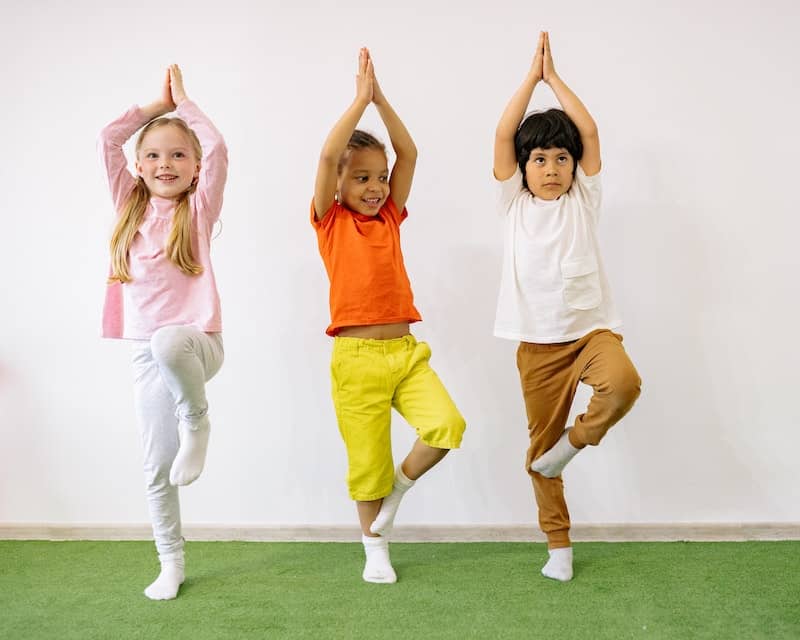Embodiment practices are important for self-growth, learning, and awareness. Read about embodiment practices for kids in school and at home.
What is Embodiment?
The word embodiment can have several different definitions, depending on how it’s used. In the dictionary, it’s defined as having a tangible form of a feeling or an idea. While this leads to thoughts of mind-body connection, the idea of embodiment practices takes this definition a step further.
Embodiment practices suggest the idea that there is an unbreakable link between the mind and body. The University of Minnesota, defined it as, “our movement and body makes visible all of who we are.” Uniting mind and body is important work because it enhances our relationships with ourselves and others. Also, embodiment supports self-growth, awareness, and the development of mindfulness. As one therapist said, “we might say embodiment is a state in which your entire intelligence is experienced as a coherent unity attuned to the world” (EmbodiedPresent). Because our minds and bodies are strongly connected, we learn best when we use both.
To put it simply, embodiment practices in the classroom involve learning and connecting through both movement and thought.
Why Teach Embodied Learning?

It’s easy to overlook learning through movement or mind-body exercises. However, implementing these practices can be extremely beneficial. Embodiment practices incorporate the relationship between the brain, academic achievement, and bodily movement (Educational Media International). Therefore, there is great value in teaching embodiment learning. It helps children develop kind, enriching relationships with themselves and others. In addition, it creates impressive results in cognitive abilities and short-term learning.
Research shows positive outcomes when implementing embodiment practices. In one study, 52 elementary students participated in embodiment learning activities. The students were tested before and after the duration of 4 months. Areas tested included cognitive and academic performance, general learning, observations from their teachers, and interviews. The results showed remarkable effects. Children’s short-term memory and academic performance improved dramatically (Educational Media International). There are additional studies that show similar outcomes.
In a study exploring embodied cognition, college students were given a math problem about a triangle. The students were then broken up into two groups. The control group sat in front of a computer that projected the problem. They had pens and paper available to use. The second group, however, had to stand in front of the computer and had no supplies, though they could use gestures. Those who did not use any strategies were the least successful (11.5%). Those who used pen and paper were more successful (27.3%). However, those who used hand gestures, or whole-body learning, did the best. Of those who used smaller gestures, 34.3% were successful. But those that used bigger movements, or “dynamic depictive gestures,” were correct 63.6% of the time (Shapiro and Stolz). In this instance, we can see that embodiment practices helped both academic performance and cognition.
Embodiment Practices in the Classroom or at Home

Embodiment learning involves the whole body during the cognitive process. As a result, there is a connection between new ideas and movement. One example of this learning style is children adding by tossing bean bags and counting. Another embodied learning activity is children singing and clapping out a spelling song. All of these methods combine movement with cognition. There are many ways to incorporate the mind and body, whether through academics or through other mind-body exercises such as yoga. Each activity has its own unique benefits.
Embodiment Learning Activities
There are many creative embodiment learning activities you can use at home or in the classroom. Some of them include:
- Acting: Act out a story, event, or article.
- Dance: Implement dance in your curriculum, using movement to express math, science, or other subjects. Whether stomping to create counts or dancing like wildlife ecosystems, it is a great way to connect the body and the mind.
- Mazes: Make a maze out of sticks, stones, rope, or other material and have children navigate through it.
- Music: The brain absorbs information extremely well through music. Whether teaching a formal music lesson, or implementing a musical activity, music is a great way to get students singing and moving. Sing songs for different subjects to assist with learning anything from science to social studies to math. Add hand movements to the songs for embodied learning.
- Yoga: Bring a little yoga into the classroom or your home. An easy way to start is to watch or download free yoga videos online.
- Sensory Play: Create with play-doh, make slime, and include a variety of other sensory play activities in your schedule.
- Games: Some motion censored games, such as using a Wii or virtual reality can help teach skills. They can even help with teaching English as a second language.
- Art: Draw comics, or paint a scene from a book or an event in history.
There are many easy, fun ways to incorporate embodied learning activities. They do not have to cost a lot of money, and yet they are well worth it to improve retention and understanding.
Soul Shoppe provides social emotional learning programs, including SEL programs for elementary schools, embodiment practices, positive parenting programs, peacemaker programs, and more.
You May Also Like:
Building Community in the Classroom
Teaching Empathy To Kids and Teenagers
Virtual Social Learning Activities
Sources:
Educational Media International, EmbodimentPresent, Saako, Shapiro and Stolz, University of Minnesota

